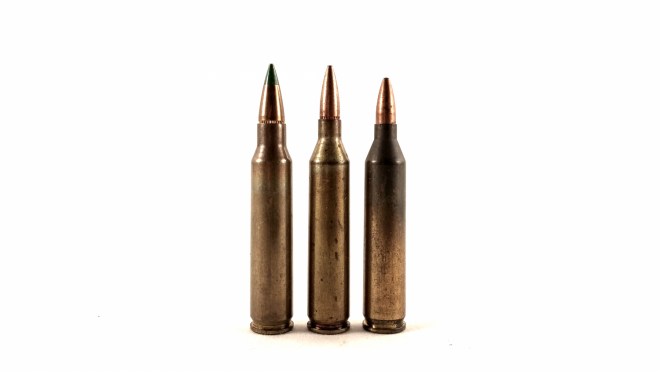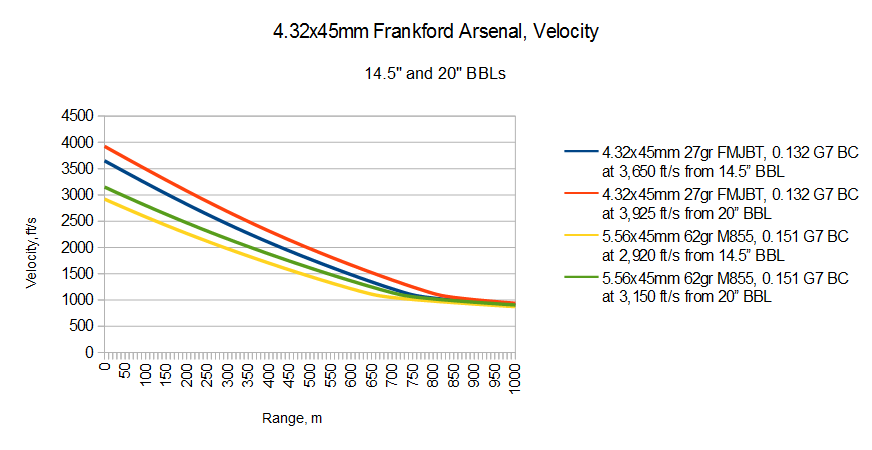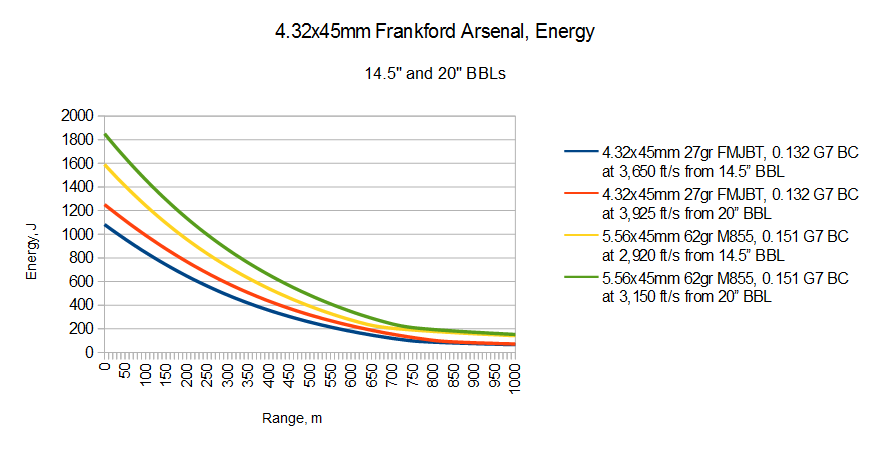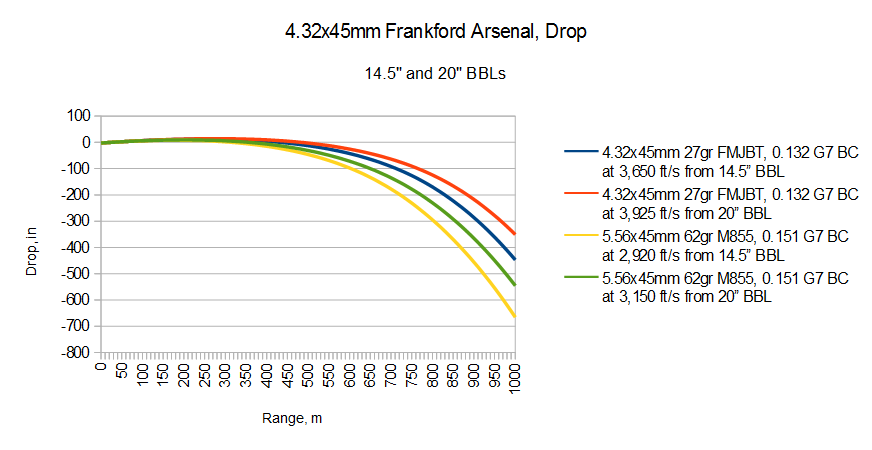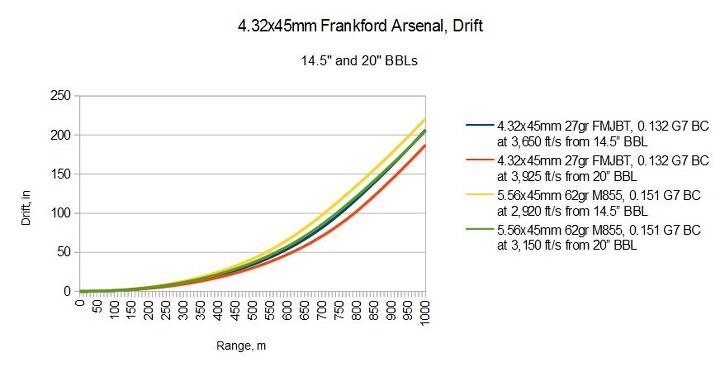Up to this point we’ve looked at calibers ranging from 5.56mm to 7.62mm, but today we’re going to look at something smaller… A lot smaller. The smallest caliber size that is feasible for a given current barrelmaking and projectile manufacture technology is .173″/4.32mm, and a natural centerfire platform for that caliber is the common 5.56mm case. This has led to a large number of cartridge types developed – including the privately designed .17 Remington, and the German 4.3x45mm DAG – that are essentially similar, and so we will cover them under one umbrella here. Representative of this type in a military context is the Frankford Arsenal’s 4.32x45mm, which was loaded with a relatively low drag 27 grain full metal jacket projectile which – like the 5.56x38mm FABRL covered recently – possessed approximately the same ballistic coefficient as the 5.56mm 55gr M193 projectile. This means the 4.32x45mm Frankford represents essentially an alternate approach to duplicating the M193 round in a lighter package, by reducing the caliber instead of making the projectile lighter and longer.
Anyway, with that out of the way, on to the ballistics:
My readers will note that, at your request, I have added the 5.56mm as a baseline round. I will continue to do this for future installments.
The 4.32x45mm did reduce weight versus the M193, weighing 9.65 grams per round, which coincidentally, is almost identical to the 5.56x38mm FABRL!
Note: All ballistic calculations are done with JBM’s Trajectory calculator, using the ballistic coefficient appropriate to the projectile being modeled, and assuming an AR-15 as a firing platform. Also, keep in mind that there is no single true velocity for a given round; velocity can vary due to a large number of factors, including ambient temperature and chamber dimensions. Instead, I try to use nominal velocity figures that are representative of the capability of the round in question.
 Your Privacy Choices
Your Privacy Choices
